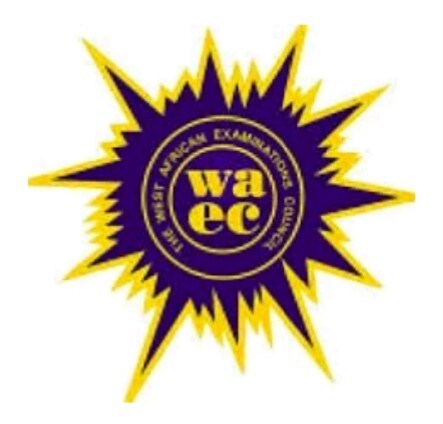Preparing for the Chemistry examination can be a daunting task, especially without a proper study guide.
The West African Examination Council (WAEC) syllabus for Chemistry is a valuable resource that provides a roadmap for your exam preparation.
It outlines the aims and objectives of the syllabus, notes on important concepts, and the format of the Chemistry exam.
In this blog post, we will explore the WAEC Chemistry syllabus, examination scheme, and recommended textbooks to help you kickstart your exam preparations.
WAEC Chemistry Syllabus:
The WAEC Chemistry syllabus covers a wide range of topics that are essential for understanding the subject.
It is important to note that the syllabus is not arranged in the order in which it should be taught.
However, it assumes that candidates have already covered the Integrated Science/Basic Science or General Science and Mathematics syllabuses at the Junior Secondary School (JSS)/Junior High School (J.H.S) level.
The syllabus is designed to assess candidates’ understanding of basic chemistry concepts, laboratory skills, the inter-relationship between chemistry and other disciplines, and critical thinking skills.
The syllabus is divided into several sections, including:
-
Introduction to Chemistry
- Measurement of physical quantities.
- Scientific methods.
-
Structure of the Atom:
- Atomic structure, including atomic number, isotopes, and electron configuration.
-
Standard Separation Techniques for Mixtures:
- Classification of mixtures and separation techniques.
-
Periodic Chemistry:
- Periodicity of elements in the periodic table.
- Trends on the periodic table.
- Reactions between acids, metals, oxides, and trioxocarbonates (IV).
- Periodic gradation of elements in group seven, the halogens.
- Elements of the first transition series.
-
Chemical Bonds:
- Interatomic bonding, including ionic and covalent bonds.
- Metallic bonding and intermolecular bonding.
-
Stoichiometry and Chemical Reactions:
- Symbols, formulae, and equations.
- Laws of chemical combination.
- Amount of substance and mole ratios.
- Solutions and concentration terms.
-
States of Matter:
- Kinetic theory of matter.
- Changes of state and properties of gases, liquids, and solids.
- Structures, properties, and uses of diamond and graphite.
-
Energy and Energy Changes:
- Energy and enthalpy.
- Description and effects of energy changes.
-
Acid, Bases, and Salts:
- Definitions and properties of acids, bases, and salts.
- Classification of acids and bases.
- Solubility of substances.
- Acid-base indicators and titration.
-
Chemical Kinetics and Equilibrium System:
- Rate of reactions and factors affecting rates.
- Equilibrium principles and Le Chatelier’s principle.
-
REDOX Reactions:
- Oxidation and reduction processes.
- Electrochemical cells and electrolysis.
- Corrosion of metals.
-
Chemistry of Carbon Compounds:
- Classification, functional groups, and properties of organic compounds.
- Petroleum/crude oil.
- Alkanes, alkenes, alkynes, benzene, alkanols, alkanoic acids, alkanoates, and their uses.
-
Chemistry, Industry, and the Environment:
- Chemical industry and pollution.
- Biotechnology.
-
Basic Biochemistry and Synthetic Polymers:
- Proteins, fats/oils, carbohydrates, and their uses.
- Synthetic polymers and their properties.
WAEC Chemistry Examination Scheme:
The Chemistry examination consists of three papers: Paper 1, Paper 2, and Paper 3. All three papers must be taken.
Paper 1: This is a multiple-choice objective test that consists of 50 questions from the common portion of the syllabus. Candidates must answer all the questions within 1 hour.
Paper 2: This is an essay paper that covers the entire syllabus. It is divided into two sections: Section A and Section B.
- Section A consists of ten short structured questions from the common portion of the syllabus. Candidates must answer all the questions.
- Section B consists of two questions from the common portion of the syllabus and two questions from the portion peculiar to the candidate’s country. Candidates must answer any three of the questions.
Paper 3: This is a practical test for school candidates or an alternative to a practical work test for private candidates. It is a 2-hour test (or 1 hour 30 minutes for private candidates) that contains three compulsory questions on quantitative analysis, qualitative analysis, and practical activities suggested in the teaching syllabuses.
Recommended Textbooks:
To supplement your exam preparation, here are some recommended textbooks for the WAEC Chemistry syllabus:
- “New School Chemistry for Senior Secondary Schools” by Ababio, O. Y. (2009)
- “Senior Secondary Chemistry” by Bajah, S.T.; Teibo, B. O.; Onwu, G.; and Obikwere, A. (Book 1: 1999, Books 2 and 3: 2000)
- “Understanding Chemistry for Schools and Colleges” by Ojokuku, G. O. (2012, Revised Edition)
- “Essential: Chemistry for Senior Secondary Schools” by I. A. Odesina (2008, 2nd Edition)
- “Countdown to WASSCE/SSCE, NECO, JME Chemistry” by Uche, I. O.; Adenuga, I. J.; and Iwuagwu, S. L. (2003)
Conclusion
The WAEC Chemistry syllabus serves as a vital tool for your exam preparation.
By studying the syllabus and using the recommended textbooks, you can gain a clear understanding of the topics to cover and the examination format.
Remember to practice with past papers and engage in practical activities to develop your laboratory skills. With proper preparation and a solid grasp of the syllabus, you’ll be well-equipped to excel in your Chemistry examination. Good luck!






